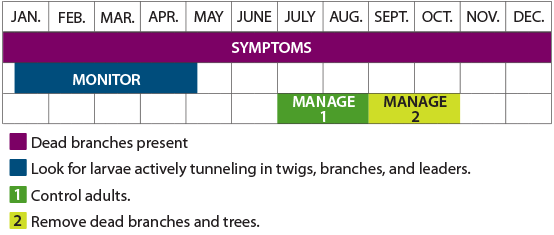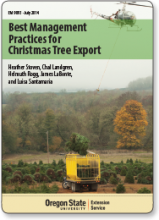Pest identification
- Adults are 2 to 3 mm (1∕10") long.
- Bronze-colored (sometimes spotted) with long beaks
- Larvae are legless, white, C-shaped grubs.
Biology and life cycle
- Adults emerge between mid-June and early August but can be present throughout the year.
- Adults feed on the inner bark of new twigs.
- Eggs are laid in punctures in twigs and branches about a month after adult emergence.
- Larvae bore in Douglas-fir twigs, branches, and leaders.
- Pupation occurs in April through mid-July.
- Larvae can be present throughout the year.
- One generation and a partial second generation occur each year.


